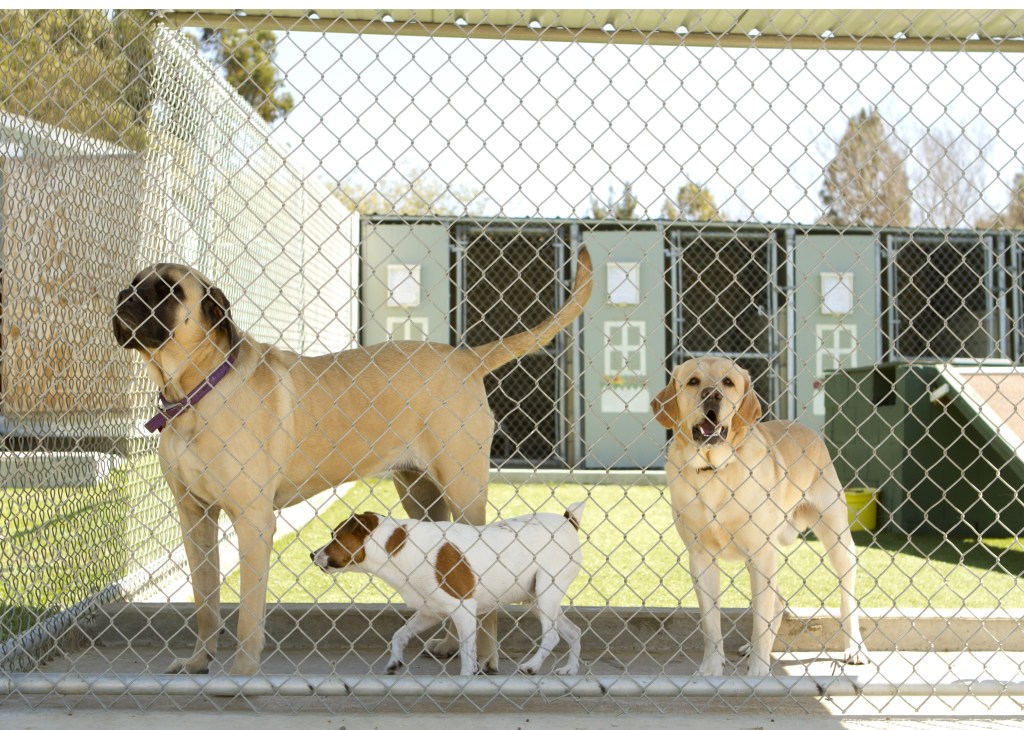A Dog’s Friend
Providing a Good Life
I think it is safe to say that most of us strive to provide our dogs with a good life. Typically, we think of this as a life that includes love, companionship, security, proper nutrition and health care, and opportunities for exercise, play, and relaxation. An additional (and I would argue basic) goal is to reduce and manage stressors and different sources of anxiety or fear that dogs may experience as they share their lives with us.
In recent years, many researchers have started to focus on quality of life measures and on identifying ways that we can manage stress/fear in dogs and improve their welfare. For example, studies have shown that dogs perceive their human caretaker as a safe haven and that we can be a “secure base” for our dogs when they are in unfamiliar situations (see “Hey Teacher” and “Support“). Other researchers have found that various forms of toys and activities that we provide to our dogs for enrichment actually differ significantly in their effectiveness as calming agents. For example, while many dogs enjoy and engage with food-delivery toys, these devices may have limited value for reducing stress or significantly enhancing activity (see Enrichment and see Play). In general, we are finding that dogs prefer enrichment that is social in nature or that provides opportunities for activity or for interactions or training with a human friend (see Nose Work).
Our Dogs’ Friends
Another area of research interest involves the effects and potential benefits of relationships with other dogs. Do dogs have a desire to spend time with other dogs, and if so how might this type of social interaction affect them, both in terms of enrichment and possibly for stress-reduction? Spending time or sharing a living space with a dog friend may be especially beneficial to shelter dogs who often have limited opportunities for social interactions.
A recently published paper asked exactly these questions and is one of the first research studies to directly compare several forms of enrichment for dogs in shelters.
The Study
Several teams of researchers from universities in Australia, Austria, and Italy are collaborating to study the welfare of dogs living in animal shelters. In this recently published study, they worked with an animal shelter located in Italy and examined what type of living arrangement was most enriching and least stressful for the dogs.
A group of 10 healthy adult male dogs were included in the study. All of the dogs experienced each of four living conditions for a period of 10 days. These were:
- Kennel: Alone in an indoor enclosure with limited visibility of other dogs. The kennel included only a water and a food bowl.
- Enriched Kennel: Alone in an indoor, larger enclosure with visibility (but no contact) with other dogs. The enclosure included a basket, a raised platform, and various toys and chew bones. It also included access to a small space with grass and dirt, to allow sniffing and digging.
- Kenneled with Two Friends: Housed in the larger enclosure that was used as the enriched kennel, with two other dogs (spayed females). No inanimate enrichment (as in condition 2) was included.
- Kenneled with Regular Human Interaction: Alone in the smaller enclosure (condition 1) with daily interaction with a human caretaker . The interaction took place in an outdoor enclosure for one hour and included play, cuddling and any degree of interaction that the dog initiated.
Behavior data were collected daily and analyzed using a previously validated methodology (see paper for details). Fecal samples were collected on several occasions during each 10-day period for measurement of fecal cortisol metabolites. (Note: Cortisol and its metabolites increase in response to physiological stress, and an increase is considered to be a measure of poor welfare). The researchers chose to use fecal cortisol metabolites because it is minimally invasive compared with other collection routes.
Results: Significant differences among the four living conditions were found for both behavior assessments and fecal cortisol levels:
- Reduced Stress-Related Behavior: Displacement behaviors such as shaking, scratching, licking/yawning, and excessive self-grooming are considered to indicate a higher arousal level and chronic stress. In this study, housing a dog with two other dogs resulted in significantly fewer displays of these behaviors compared to the other three conditions.
- Stereotypies/repetitive behaviors: Only two of the 10 dogs showed stereotypies (circling, pacing, compulsive licking/gnawing). For these two dogs, housing with other dogs or living alone in the enriched enclosure dramattically reduced these behaviors. Interestingly, daily interaction with a human did not influence stress-related behaviors in these dogs.
- Fecal Cortisol Metabolites (FCM): As expected, this measure of physiological stress was highest in the dogs when they were housed alone in a bare cage. In contrast, housing with two other dogs resulted in the lowest FCM levels. This result suggests a significant stress-reducing effect of housing dogs with other dogs. Interestingly (and surprisingly), daily interaction with a human caretaker did not reduce FCM levels in the dogs in this study.
Take Away for Dog Folks
Although this was a small group of dogs, one of the most important findings of this study was that living with other dogs had the greatest stress-reducing effects on individuals and provided more benefit than either a toy-enriched environment or daily interaction with a human caretaker.
Although we may intuitively feel that human interactions will be beneficial to sheltered or kenneled dogs, these data suggest that this type of intervention may have limited welfare benefit when it encompasses just a small part of a dog’s day. This does not mean of course, that shelters should not encourage volunteer/staff interactions with dogs. Rather, perhaps the manner in which this interaction is offered, its frequency, and duration should be considered. In this study, the researchers suggest that the act of removing the dogs from their kennels, walking them past other dogs, and visiting a relatively unfamiliar enclosure may have induced stress. Considering interactions that prevent possible stressors or increase the frequency and duration of interactions (or perhaps including a dog friend), might all be approaches that could enhance human-interaction experiences for kenneled dogs.
As a trainer, I would be remiss to not address the fact that there are dogs in shelters and living in homes who do NOT wish to have a dog friend and who are happiest in a single dog home (or if in a shelter, kennel). These preferences range from dogs who are simply not interested in having a friendship with another dog to those who, for various reasons, are highly reactive to most or all other dogs. The welfare and safety of these dogs equally depends upon us recognizing their desire to not interact with other dogs and to respect and protect those desires.
For those dogs who would enjoy having a dog friend or two, this research suggests that providing a shared living space for dogs can be an effective enrichment approach for improving welfare and reducing stress in shelter dogs. Although additional research is needed, for dogs in homes this study provides us with a bit of evidence that having a dog friend can help to reduce stress-related behaviors in dogs.
Tell us about your experiences!
Does your dog have dog friends (mine definitely do!).
Do you see benefits for dogs if you have a multiple dog home?
Do you think dogs in shelter are happier with a canine companion?
Cited Study: Corsetti S, Natoli E, Palme R, Viggiano E. Intraspecific interactions decrease stress affecting welfare in shelter dogs: A comparison of four different housing conditions. Animals 2023, 13.1828, doi.org/10.3390/ani13111828.





I have been a multiple-dog home since 2000 and wouldn’t have it any other way. All the dogs I have fostered benefited from living with my dogs (some found comfort, some took advantage of social facilitation, others were able to learn some manners LOL). It always makes my heart glad when I see my dogs playing or cuddled together. Plus I get some great photos!
LikeLike
Pingback: How Do Dogs Prefer to be Fed? | The Science Dog